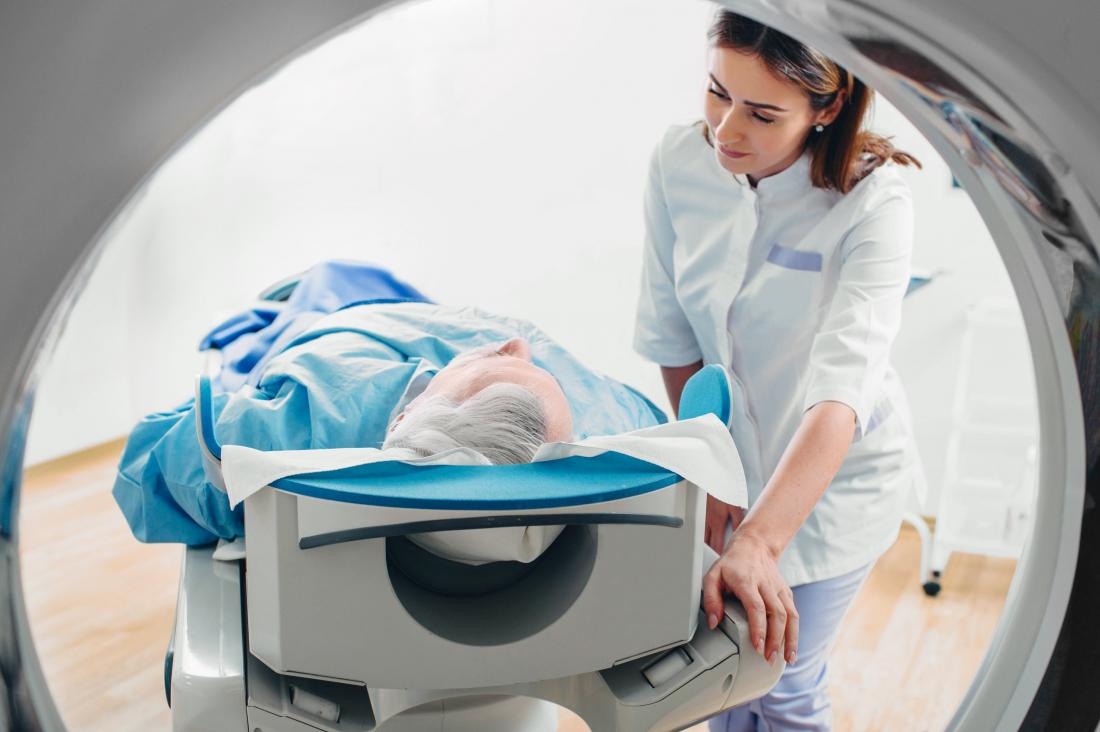In this article, we explore the causes and treatment of periumbilical pain. Also, we will review when a person should seek emergency medical attention.
What is periumbilical pain?

An umbilical hernia, acute appendicitis, or a small bowel obstruction can all cause periumbilical pain.
Periumbilical pain occurs in the area surrounding and including the belly button.
When diagnosing abdominal pain, doctors must know where the pain is located.
For example, when a person has appendicitis, the pain often starts around the periumbilical region and then moves to the right lower side of the abdomen. Sometimes, people with appendicitis may report pain in the right side and not in the periumbilical region.
Doctors may need to carry out further examinations to accurately diagnose periumbilical pain.
Causes
The causes of periumbilical pain can range from mild discomforts to surgical emergencies.
People with this type of pain may have difficulty telling their doctor exactly where they feel it.
However, depending on the area of the abdomen, pain can be associated with many different conditions. For example, pain in the upper right area of the abdomen could suggest a liver condition, while pain in the upper left area could signal a heart attack or pancreatitis.
Some of the causes of periumbilical pain listed below may present in different ways. For example, some people with gastritis, esophagitis, or peptic ulcers may also feel pain in the upper middle area of the abdomen, or the epigastric region.
Umbilical hernia
If a person has an umbilical hernia, they may notice a bulge in their belly button area, as well as pain. An umbilical hernia occurs when an organ or a part of an organ pushes through the abdominal wall.
Infants and young children are more likely to experience an umbilical hernia. In adults, umbilical hernias are more common in women or people with increased abdominal pressure relating to pregnancy or obesity.
Acute appendicitis
People with appendicitis need a rapid and accurate diagnosis, followed by surgery to remove the appendix. Appendectomy is the most common abdominal surgery among children.
People with acute appendicitis may experience periumbilical pain that migrates to the right side. They may also experience a loss of appetite, fever, and tenderness on the right side.
Mesenteric artery ischemia
Doctors define mesenteric artery ischemia as a lack of blood flow to the small intestine.
People can have acute or chronic mesenteric ischemia. In acute mesenteric ischemia, people may have a sudden onset of periumbilical pain, nausea, and vomiting.
Abdominal aortic dissection
People with an aortic dissection must seek immediate medical attention.
An abdominal aortic dissection is when a tear forms in the aorta, which is the major artery supplying blood to the body.
Doctors estimate that 3 out of every 1,000 people who present to the emergency department for back, chest, or abdominal pain have an abdominal aortic dissection.
The surgeon must treat the abdominal aortic dissection immediately, as mortality can reach up to 50% in the first 48 hours.
Small bowel obstruction

A doctor may suggest a CT scan to help diagnose a small bowel obstruction.
People with a small bowel obstruction have a blockage in their intestine. Several factors can cause these blockages, including:
Another cause of small bowel obstruction is volvulus, a problem that occurs when a loop in the intestine twists and blocks the bowel.
People with small bowel obstruction may experience:
- periumbilical pain
- abdominal distension, or a bloated-looking belly
- nausea
- vomiting
- mild-to-severe constipation
- in some cases, loose stools and gas
Children can also experience small bowel obstructions.
Some doctors can diagnose a small bowel obstruction by conducting a physical exam. The use of CT, ultrasound, and X-ray imaging has improved the accuracy of small bowel disease diagnosis.
Most people with small bowel disease will require surgery to unblock the intestine. Doctors can treat some obstructions using a nonsurgical technique called nasogastric decompression.
Gastritis, esophagitis, or peptic ulcer disease
People with gastritis, esophagitis, or peptic ulcer disease may report periumbilical pain. Other people with these conditions may experience the pain in the upper central area of the abdomen.
Gastritis can be acute or chronic. Some people may not report any symptoms, or they may have very mild symptoms. Other people may experience abdominal pain, vomiting, and nausea.
Esophagitis is an inflammation of the esophagus, which is the pipe that connects the mouth to the stomach. The most common symptoms that people with esophagitis report are chest pain, painful swallowing, and difficulty swallowing.
People with esophagitis may feel pain in the upper central region of the abdomen or the periumbilical region.
People with peptic ulcer disease have ulcers in the stomach and the upper part of the small intestine, or the duodenum. Symptoms of peptic ulcer disease vary depending on a person’s age and the location of the ulcers.
People with peptic ulcer disease may report epigastric or periumbilical pain, bloating, nausea, and vomiting, among other symptoms.
Periumbilical pain in children
Appendicitis is the most common reason for emergency abdominal surgery among children. Children with appendicitis need immediate medical attention and a quick diagnosis.
Children may complain of abdominal pain in the periumbilical, central, or epigastric regions. The pain will eventually move to the right lower side of the abdomen.
It can be difficult to diagnose appendicitis in children because typical symptoms are the exception and not the rule in this age group. Children may report vague, nonspecific symptoms such as stomach pain, or they may develop a fever or vomit.
Doctors may need to confirm and clarify a child’s symptoms by conducting a physical examination or by running blood tests, an ultrasound, CT scans, or an MRI.
Diagnosis
Periumbilical pain is a symptom of many conditions, so a doctor will ask about a person’s full medical history.
Blood tests and imaging techniques, such as X-rays, CT scans, ultrasounds, and MRIs, are useful tools when the doctor is uncertain of the diagnosis.
Periumbilical pain may not always suggest the presence of a condition involving the abdominal tract. For example, an abdominal aortic dissection can cause periumbilical pain but is a problem with blood flow.
Treatment
Treatment for periumbilical pain depends on the underlying cause.
Surgery is the usual treatment for an umbilical hernia. However, people with umbilical hernias may develop another one, even after successful surgery.
If the cause is acute appendicitis, a surgeon will need to remove the appendix immediately. Fluids, pain relievers, and antibiotics are also part of the treatment plan.
People with mesenteric artery ischemia will also require surgery. Doctors will give a person fluids and antibiotics to help prevent an infection. After the operation, they will prescribe anticoagulants to prevent recurrence.
Once a doctor confirms that a person has an abdominal aortic dissection, emergency surgery is necessary. Doctors will also usually prescribe beta-blockers.
People with gastritis, esophagitis, or peptic ulcer disease do not require surgery. Doctors will treat these conditions using medications that can reduce the amount of acid in the stomach.
When to see a doctor

A person should talk to a doctor if they have periumbilical pain, as a diagnosis is often difficult.
People with periumbilical pain should seek medical attention, as it is often difficult to determine what is causing it.
Some causes of periumbilical pain — such as appendicitis, small bowel obstruction, hernias, and aortic dissection — require surgery.
People should always take children with periumbilical pain to a doctor. Certain conditions, including appendicitis, must receive prompt treatment. This is because the risk of complications increases over time.
Gastritis, esophagitis, and peptic ulcer disease may not require emergency medical attention, but people should speak with a doctor about how to relieve symptoms and reduce the risk of complications.
Summary
People experiencing periumbilical pain should speak to a doctor, who can help determine the underlying cause. Doctors may find it challenging to diagnose periumbilical pain because it is a symptom of a variety of conditions.
People with periumbilical pain may have a condition that affects a structure of the abdominal tract or a problem with blood flow to these structures. Many conditions that cause periumbilical pain require surgery to treat them.
People with gastritis, esophagitis, and peptide ulcer disease may not require emergency medical care but should still seek advice from a doctor.
